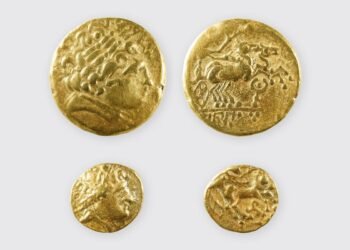Archaeologists have uncovered a remarkably well-preserved tomb dating back more than 2,000 years, in the Wulong District of Chongqing Municipality, Southwest China.

This major archaeological find was announced by the Chongqing Institute of Cultural Relics and Archaeology and the Chinese Academy of Social Sciences.
The tomb, officially named “Guankou Western Han Dynasty Tomb No. 1,” was discovered during a comprehensive archaeological project, initiated as part of the Baima project, associated with the construction of a hydropower station along the Wujiang River. Led by Huang Wei, the excavation team comprised over 20 experts from various archaeology research institutes and universities.
The tomb, dating back to the early Western Han Dynasty in the second year of Emperor Hui (193 BCE), is unprecedented in its well-preserved state.
“Although several tombs have been discovered dating back to the period between the era of the Han Dynasty and the politically unstable period of the Six Dynasties, roughly dating between 206 BCE to 589 CE, the latest discovery is the most significant of them all,” said Huang Wei.
The excavation yielded over 600 relics, including lacquerware, woodware, bambooware, pottery, bronzeware, textiles, and a notable jade sword. Bai Jiujiang, head of the Chongqing Cultural Relics and Archaeology Research Institute, highlighted the tomb’s unique aspects, stating that it is “particularly significant because it contains the largest quantity of lacquered wood and bamboo wares ever found at one time in the upper reaches of the Yangtze River.”
The tomb’s year-round waterlogged condition played a crucial role in preserving the artifacts undisturbed, a rare circumstance that archaeologists find immensely valuable. A detailed list of burial items, including their quantity and size, accompanied the findings.
Experts believe that the presence of a jade sword and the tomb’s structural features suggest the deceased held a high-ranking position in society. The Chinese Academy of Social Sciences noted, “It can be inferred that the owner of the tomb would’ve been a high-ranking official due to the shape and specifications of the tomb and other unearthed objects.”
As the longest-reigning empire in Chinese history, the Han Dynasty played a pivotal role in shaping the nation’s cultural identity. Historians and archaeologists anticipate that the findings from this tomb will contribute substantially to ongoing studies.























